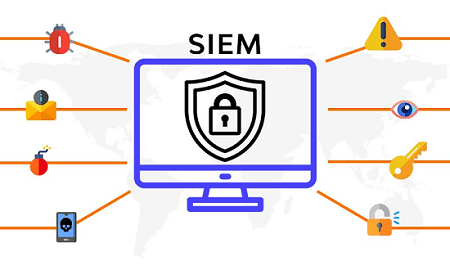Security solutions like SIEM can prevent cyber-attacks and strengthen your defenses. Before anything else, SIEM stands for security information and event management, and it has the job of detecting and analyzing advanced threats using global intelligence. It aims to provide organizations with a next-generation security tool that fends off bad actors.
It integrates security information management (SIM) and security event management (SEM) to perform real-time analysis of threat alerts triggered by applications and network hardware.
SIEM software would study events on the network and compare them against its database of potential and current threats. This process can confirm if the events have an element of maliciousness. It provides security teams with a complete picture of the activities occurring within their IT environment to respond appropriately.
Typically, a SIEM solution enables your organization to record activities throughout the network, normalize that data, and analyze it for security purposes. It also warns security teams regarding potential breaches for investigations./p>
UNDERSTANDING WHAT IS SIEM Stand For AND HOW IT WORKS?
SIEM software does its job by aggregating log and event data produced by applications, security devices, and host servers. It combines all the data it generates into a single platform.
This security solution arranges the data it collects into categories, filing them under malware activities, unsuccessful logins, and adware, for instance.
When a SIEM sees a threat lurking, it notifies concerned teams and determines a threat level based on pre-defined rules.

Let me give you this situation: someone tries to log into one of your online accounts a hundred times in a short amount of time. These could be bots trying to get into your data.
When SIEM notices this unusual activity, it creates security alerts. This action will ramp up investigations and minimize time wasted on false positives.
What Features Does SIEM Stand For Have?
SIEM stands for excellent security. It offers a wide range of capabilities, especially if you combine it with other applications. It also eases the process by putting them together in one dashboard. SIEM improves your enterprise security by delivering clear visibility on your network comprised of different devices and apps.
This software gives security teams insights regarding attacker Tactics, Techniques, and Procedures, and known Indicators of Compromise. It utilizes various intelligence systems containing threat details to detect cyber attacks around your network.
The threat detection aspect of this tool can spot threats in cloud resources, emails, applications, and endpoints. It tracks every movement to monitor signs of abnormal behavior. It also highlights lateral movements and hacked accounts.
SIEM software sends alerts whenever they find a threat to enable security teams to respond promptly. Some versions of this program automate workflow and case management to conduct investigations right away.
Another component of SIEM is log management, which focuses on three main subjects, namely:
- Data aggregation or the collection of large amounts of data from various locations into one platform
- Data normalization or the comparison, correlation, and analysis of data
- Data analysis or the examination of potential signs of breaches, threats, or vulnerabilities
Finally, SIEM also ensures compliance by organizing event information and simplifying organizations’ reporting.
Why Should You Have SIEM Stand For Solution?
SIEM software ensures that you protect your network in the best way possible. By gathering information proactively, you can prevent minor problems from snowballing. It could give you peace of mind and the possibility of getting better revenue in the long run.
If there’s malware on your network, your applications will not work correctly. Providing a poor user experience to your customers can impact your reputation. That said, using SIEM combined with endpoint detection and response (EDR) can help you sustain customer satisfaction.
SIEM Stand For Software Support
SIEM software can also support you when it comes to IT security audits. Depending on your industry, you may need to meet specific regulations for network security. Auditors will check if your IT security complies with HIPAA (Health Insurance Portability and Accountability Act or PCI-DSS (Payment Card Industry Data Security Standard).
It would help if you were ready when it’s time for your IT security data audit. After all, organizations that fail to meet security standards could lose accreditation. A centralized security platform like SIEM software lets you organize security reports specific to your industry. This step is valuable in passing your security audit.
SIEM Stand For Conclusion
SIEM and EDR platforms provide your organization with advanced layers of defenses. These give you complete visibility on the threats that target your network to respond to them appropriately.
Want to gain more knowledge about how you can better protect your system? Contact Xcitium today!
